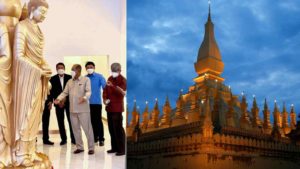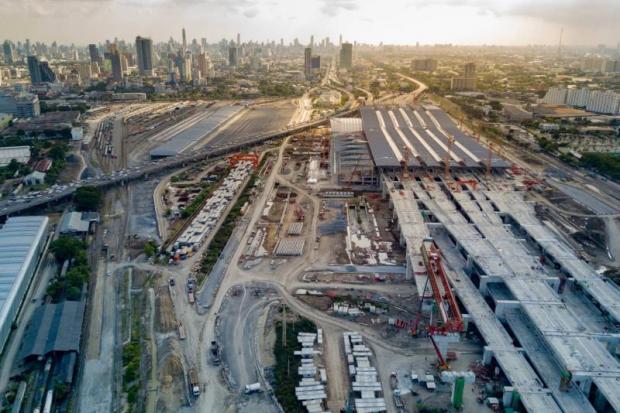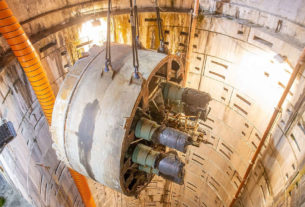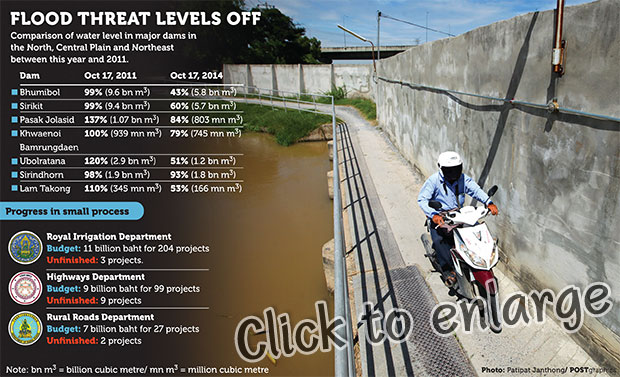
Chinese property developer provokes ire in Theravada-style Buddhist Laos with 100-meter Mahayana-style Buddha statue
Locals who follow another sect protest structure set to become capital’s tallest
Flexing its economic might in impoverished Laos, China has hit a snag on the religious front, provoking anti-Chinese anger over a gigantic statue of Buddha that a Shanghai company plans to build in Vientiane.
Social media posts have crackled with criticism against Wan Feng Shanghai Real Estate Co.’s plan to build a towering 100-meter-tall Buddha statue as a tourist attraction in a special economic zone in Vientiane, the Laotian capital on the banks of the Mekong River. If the company goes ahead, the structure will be the tallest in Vientiane.
“People disagree with this symbol of China and are expressing anger on Facebook,” a Laotian political observer told Nikkei Asia on condition of anonymity. “They are accusing the Chinese of stepping on Laotian Buddhism.”
Laotians have taken umbrage at those plans because the Buddha statue will be built in the Mahayana style in the sprawling $5 billion That Luang Marsh special economic zone, funded by the Chinese property developer.
A photo of the replica of the statue that has circulated in local media showed it was designed in the Mahayana fashion. Mahayana is one of three main schools of Buddhism and it has followers in China, Japan and South Korea.
Laotians, by contrast, follow the Theravada school, as do Buddhists in Thailand, Cambodia, Myanmar and Sri Lanka. In Laos, the statues tend to be of Buddha sitting cross-legged, unlike the one planned by the Chinese developer.
The height of the Chinese statue will make it one of the tallest structures in Vientiane, a city of largely low-rise buildings home to nearly 1 million citizens. Its location is close to Pha That Luang, the gold-plated Buddhist stupa in the center of the city.
“It would be unacceptable that a large statue was built in the That Muang Marsh SEZ to attract tourism not far from Pha That Luang stupa, a symbol of Lao sovereignty,” said Adisorn Semyaem, director of the Mekong Studies Center at the Bangkok-based Chulalongkorn University.
“Laos has a nationalistic [trait] not different from Cambodia or Thailand which is evident in the style of Buddha statues — the construction of statues to be enshrined in the temples requires that the Lao style, also known as Lan Xang style, [is followed],” he said.
Last November, social media in Laos sprang alive with angry posts over an attempt by a Chinese company that hung Chinese red lanterns on utility poles it had built throughout Vientiane. The company was forced to take them down later, according to media reports.
“Although it may not be apparent at first glance, Lao people have a very high sense of pride in their culture,” said Norihiko Yamada, a Japanese academic who has worked in several government ministries in Laos.” Both the government and the people place great importance on ‘Lao-ness’ and do not like anything that goes against it.”
This anti-Chinese sentiment has also extended to rural communities that have complained about encroachment on their land which had been taken over by Chinese companies to set up banana plantations.
“Some social media users have directly criticized the Chinese companies,” said a resident from Vientiane, who spoke on condition of anonymity. “Few even criticize the government for letting the Chinese to get away, but do so using fake social media accounts.”
Laotians seem to have found a political voice in an otherwise repressive environment, where the ruling Lao People’s Revolutionary Party has crushed any hint of opposition to its grip on power.
The discontent over the Buddha statue comes at an awkward time for the party, which has begun to celebrate the launch of the Lao-China high-speed railway in early December. The $6 billion, 414-km track cutting through Laos is part of the line that China has built as part of Beijing’s Belt and Road Initiative. It is Beijing’s hope that in time the line, which begins in southern China, will be extended to Singapore via Thailand and Malaysia.
This landmark project, built with Chinese loans, has seen Laos sink further into a sea of debt. Reports early this year revealed that Laos’ $20 billion economy carries an estimated $12.6 billion in foreign debt. Of that, China accounts for nearly half of the loans, or some $5.9 billion.
China is funding an infrastructure building spree in Laos, ranging from large hydropower projects and special economic zones to the country’s first bullet train.
Not surprisingly, as China casts its economic web over Laos, locals are clutching onto their Buddhist culture as their identity. “That is the only thing left to be preserved as an indicator of their character and identity,” said Supalak Ganjanakhundee, a Bangkok-based Southeast Asia analyst and Laos analyst. “This has become a bargaining chip for the people.”
Source: https://asia.nikkei.com/Politics/International-relations/Chinese-developer-provokes-ire-in-Laos-with-100-meter-Buddha-statue



